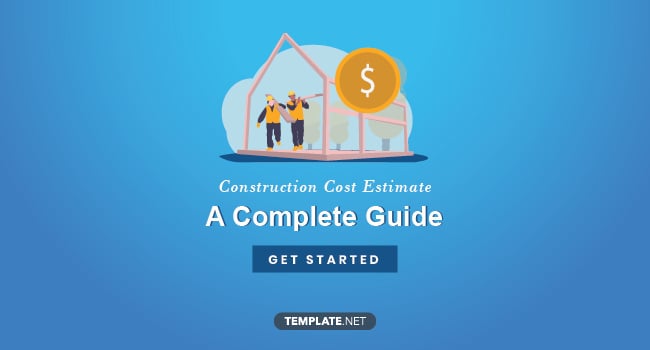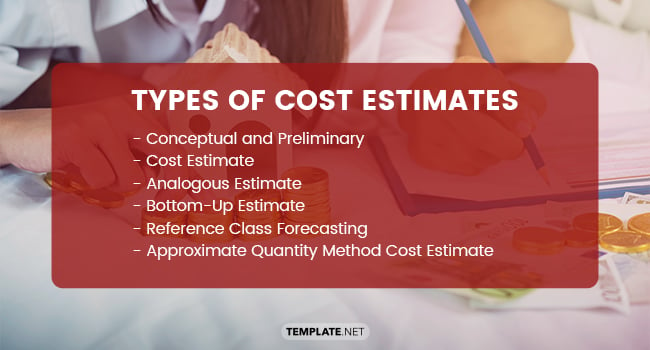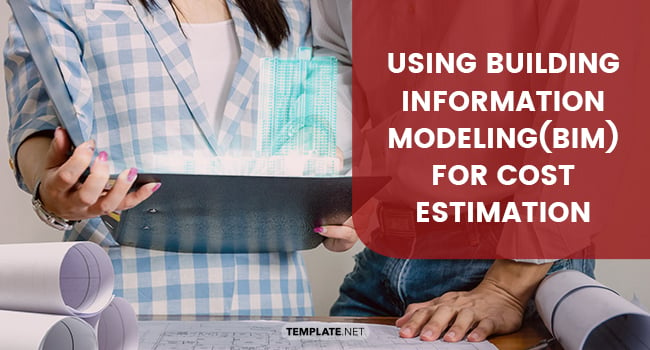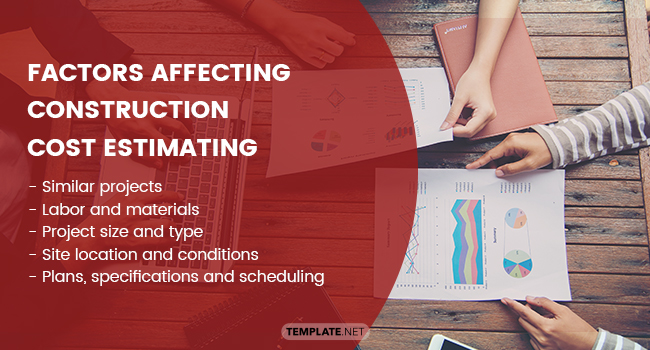Construction Cost Estimating: A Complete Guide
All businesses, no matter the background, locality, and specialization, need an efficient financial strategy. Without these practical action plans, the enterprise will face different challenges that will affect the productivity of the company. As always, effective cost management is crucial in making sure that the business will survive any situation that they will meet in the future. For the construction industry, cost estimating is an essential component in the decision-making process of project owners and contractors. Cost estimating—related to budget planning, cost analysis, and schedule planning—has been helping clients, contractors, and subcontractors with determining how to allocate funds in the chosen project properly.

Construction Cost Estimating: A Complete Guide
The method of cost estimating assists project leaders in controlling the input and outflow of the funds to make sure that all aspects of the project receive the amount they should get. This article talks about all the things concerning construction cost estimating. Read through and gather more information about cost estimating, which is relevant for ongoing and upcoming construction projects.
Types of Cost Estimates

Cost estimating is a method wherein the contractor, engineers, architect, and owner discuss the totality or the approximation of funds needed for the entire project. The result of the discussion, which is the cost estimate, is the sum of the budget that the owner has to come up with to make sure the plan starts to make progress. With the cost estimate, the people involved in the project have a vivid view of the required materials, workers, sets of equipment, and timeframe. When a construction project utilizes cost estimates, it can pinpoint possible overruns, unnecessary expenses, and inaccurate calculations. Overall, cost estimation is a necessary tool not only for construction companies but also for entrepreneurs.
After the project analysis and building cost analysis is complete, the planners start to classify the materials to buy first. By using cost breakdown sheets, contractors can easily create the layout they need for the project. Moreover, it is good to note that there are multiple types of cost estimates that planners can use for their planning process. Here are some of the categorized samples that most construction projects work with when finishing their plans.
Conceptual and Preliminary Cost Estimate
From the term itself, the preliminary cost estimate is the initial approximation of the overall cost of the project. During this stage of the project, the list of expenses is incomplete. The preliminary cost estimate only uses references of materials comparable to the requirement, and not the actual tool yet. Besides that, this type of cost estimate also includes individual items that are indispensable to the production of the project—the cost of the lands, electrical conditions, water connection, and more. These components are distinct and individually assessed by the team.
Analogous Estimate
When the client is not new to the concept of investing in construction projects, chances are they have documents and assessments of previous projects. In analogous estimating, the hired contractors and project managers look at past projects and compare the contents to the current plans. By using the data and comparing the two projects, the contractor and manager can find ways of improving the existing project to be better than its predecessor. For instance, if the past construction cost plan lacked proper allocation of funds, then the upcoming project should make this a priority.
Bottom-up Estimate
The bottom-up estimate takes on a different approach as the project management provides estimates for individual activities needed for the project and then combines it in one document. On other occasions, the other members of the team, like subcontractors, submit the estimates rather than the heads. Since the subcontractors have a better knowledge of the tasks and situations, they can accurately provide the numbers.
Reference Class Forecasting
Also called comparison class forecasting, this method focuses on reviewing past decisions, situations, and actions done by the client in previous projects. The contractors can use the data from old projects to help create a better outcome for the future project. The approach which uses information from past works can accurately predict the project’s duration as well as the risks that come with the plan. This reliable method focuses on looking at the results from the same actions to avoid recurring errors.
Approximate Quantity Method Cost Estimate
Recognized as one of the best cost estimate techniques available to contractors and planners, the estimated quantity method uses a measurement group approach. With that, items that have the same dimensions are mainly grouped. Moreover, items grouped in the same area or perimeter have a measurement based on a group unit. This means that equipment costs will be dependent on the materials in a particular area.
Detailed Cost Estimate
After the approval of the preliminary cost estimation document, the planners can move on to creating a more comprehensive version. The detailed cost estimate contains the precise measurement and price of each required item. The calculations of each material are independent of other groups. Since the rates adjusted, the estimation will slightly increase. However, budget tracking is better when the expenses are accurate. Furthermore, most of the detailed cost estimate documents contain information about work specifications, drawings and blueprints, and scheduling.
Supplementary Cost Estimate
In some unexpected circumstances, clients demands for additional rooms in residential construction. When that happens, contractors use a supplementary cost estimate to measure the budget for this extra work correctly. A supplementary cost estimate is applicable when the project is still under works. The document has a detailed approximation of the requirements and the information of the original estimate before the changes.
Definitive Estimate
If all calculations are precise and acceptable to both the contractor and clients, the cost estimate is complete. The definitive estimate is the final output of the cost estimation process. However, work modifications can happen during the construction of the establishment. Thus, adjustments in the definitive estimate are possible. Contractors or subcontractors submit the new tender when the client requests for revisions or additions to the project.
Use of Cost Estimating Softwares

The processes of cost estimating take up a lot of time and effort. Contractors and subcontractors have to do sufficient research to provide the required data requested by the client. Before the innovations in technology, subcontractors spend long hours encoding the cost estimations for projects. But with the modernity of computers and the invention of construction software, the work of subcontractors and contractors became lighter. Now, these people can visit websites to know the trends in the construction industry.
Using construction estimating software is essential in making sure that errors are minimal when it comes to the measurements of materials to use in the project. With software, the calculations are detailed and specific, which in turn is beneficial for contractors and clients. Cost estimating matters to the budget limit of the client in the sense that the numbers would have an exact amount
Using Building Information Modeling (BIM) for Cost Estimation

Building Modeling Model, BIM for short, is a collaborative process of various tools that allows architecture, engineering, and construction (AEC) professionals to have a comprehensive layout for the planning stage of a project. Through the 3D model-based technology, these planners can efficiently map out their objectives to manage the project well. The process creates a digital representation of the physical aspect of the project and the functionality of rooms or places. With a better overview of the infrastructure, AEC professionals can analyze the procedures of the project without problems. Although the creation of the BIM sample takes time, the effect will compensate for the hard work. Additionally, project management can base the progress reports on the scale of the material and the completed parts.
Factors Affecting Construction Cost Estimating

Several factors affect the processes of construction cost estimating. The influence of outside elements like weather, miscommunication between parties, and delays with supplies affect the accuracy of the cost estimation document. But importantly, the complexity of projects and the various requirements and specifications from the owner and other people can be a burden for contractors. Nevertheless, the project manager has the responsibility of carrying out the demands of the client (and even the architects or engineers, sometimes) to make sure that the project reaches its full potential. With that, here are some of the most common factors or challenges that planners meet when formulating the construction cost estimation document.
Similar Projects
The existence of similar projects is advantageous for contractors and budget planners. These other projects can be the reference that the groups need for their plans and goals. However, it is crucial to note that planners and contractors have to consult the business plan and management plan before pushing through with the cost estimation. This factor can be a positive and negative thing, depending on the situation of the project.
Labor and Materials
Every project plan requires a well-formulated labor schedule and daily construction schedules. Without these materials, the construction site will experience disarray. When the team has no list of things to accomplish, the project will have setbacks. For labor, the project manager should hire appropriate workers who are knowledgeable about the necessary materials for the project. Furthermore, the arrival or delay of construction materials is a factor that affects the processes of the project.
Project Size and Type
Another factor that affects the cost estimating process of a project is the type and extent of the plan. If the projects are large estates, skyrises, and large infrastructures, then it requires more people—a workforce that meets the immediate demands of the owner or contractors. At times, these kinds of projects call for the assistance of a specialized labor force. And it will be extra expenses shouldered by the project.
Site Location and Conditions
Even the perfect site for the construction project can have problems. From unfriendly neighbors to problematic power lines, construction projects will meet these dilemmas, one way or another. At times, marketing plans don’t work when the area is too far from the bustle of people. In other times, the location may look excellent at first, but later becomes a burden for the construction team. If the place is too distant, the cost of transportation will be more for the budget planner. These simple conditions can be challenging to handle if everything happens at once.
Plans, Specifications, and Scheduling
When the planners—contractors, subcontractors, architects, budget coordinators, and owner—have specified the plans and schedules of the project, the expenses will have reductions. Proper execution of the plans partnered with a correct work schedule will be a massive impact on the productivity of the workers. As a whole, when the people involved have planned everything accordingly, cost estimates will be lesser than expected.
Why Do Construction Companies Need Cost Estimating?
The methods of cost estimating appear easy at first, but it demands a significant amount of time and energy. From getting information on the materials and calculating the equipment costs, the creation of a project budget will last for weeks. Despite the challenges that come with making the cost estimation of the annual budget for projects, especially when it is an extended plan, the process is essential in keeping track of where the resources will go. Here are some crucial points that discuss the importance of cost estimating for construction projects.
- When investors choose project plans, it becomes a commitment for them. They invest money and expect rewards in the future. For investors, cost estimating is essential in tracking the expenses. Moreover, investors have a better understanding of the action plans and schedules.
- Accuracy is crucial for construction projects. Since the end product of the plan are buildings that the public uses, these structures should withstand changes in weather and other things. With cost estimation, the number of construction materials is precise. These materials are vital in making sure that the projects are efficient and secure.
- If the people involved in the project are aware of the budget allotment, they can realign their decisions to match the goals of the project. Every project requires a particular budget plan. And with cost estimation, the planners can layout objectives better.
The Future of Construction Cost Estimation
For every construction project, there is a detailed and well-expounded cost estimation document at the back of a contractor’s cabinet. As a whole, construction cost estimation is crucial in determining the available resources to use for the project and the money needed for the whole plan. Consequently, cost estimation creates a better plan for the project—one that secures the safety of the people. With that, the future of cost estimation is brighter than ever because of the newly created software applications honed by talented computer programmers. Construction cost estimation continues to be one of the most important components in a construction project, and it will be for the longest time. So, in conclusion, cost estimation is a convenient tool that assists planners with the processes of a construction project.






